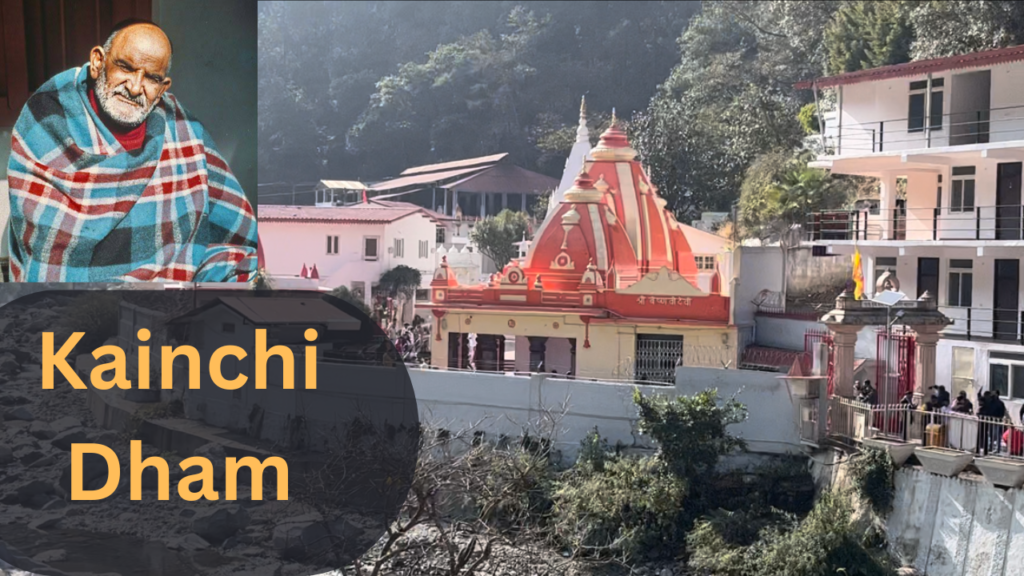Introduction
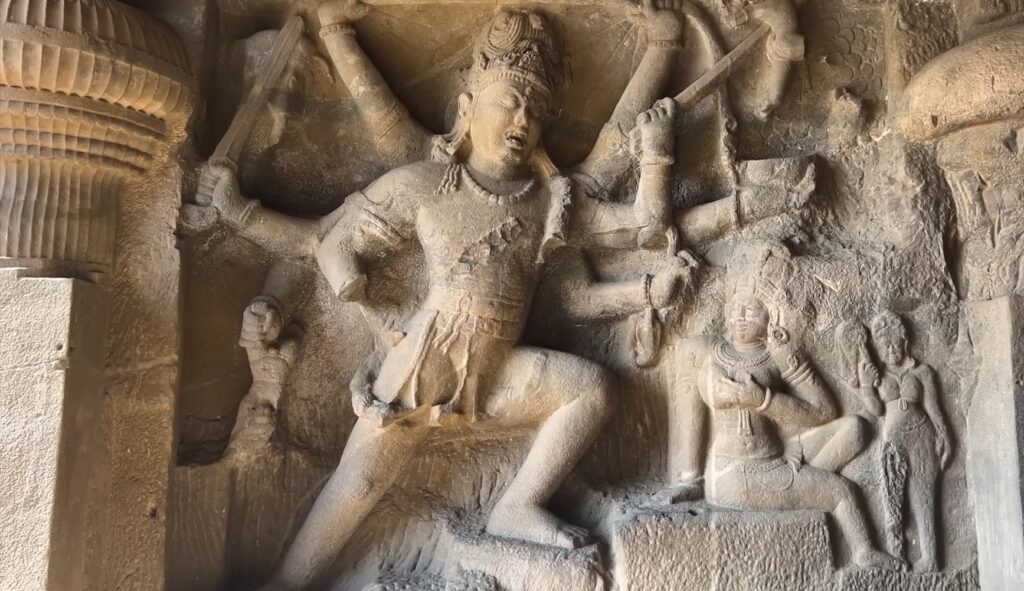
Nestled in the heart of Maharashtra, the Ajanta and Ellora Caves are the epitome of ancient Indian art and architecture. These UNESCO World Heritage Sites stand as a testament to the rich cultural and religious history of India, drawing travelers, historians, and art enthusiasts from around the globe. Each cave complex, with its unique historical narrative and artistic grandeur, offers a journey back in time, showcasing the brilliance and devotion of ancient artisans.
Historical Background of Ajanta and Ellora Caves
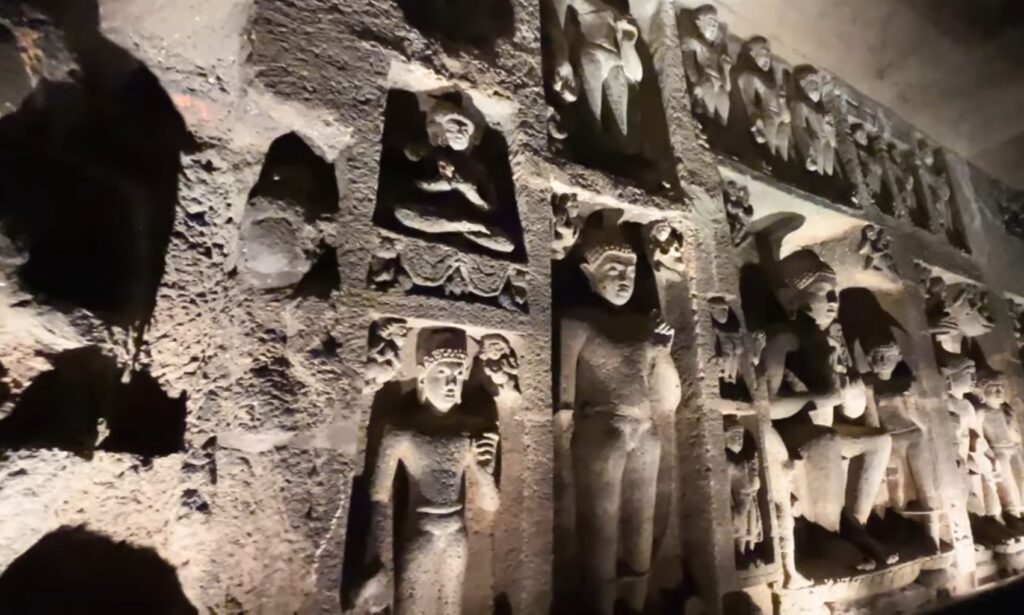
The Ajanta Caves, carved between the 2nd century BCE and the 6th century CE, are primarily Buddhist monastic complexes. These 29 caves were hidden from the world for centuries, shrouded in dense forest, until their accidental rediscovery by a British officer named John Smith in 1819. The caves served as secluded retreats for Buddhist monks who meticulously chiseled the rock faces into serene sanctuaries filled with intricate sculptures and vibrant murals.
The Ellora Caves, on the other hand, represent a convergence of three major religions—Buddhism, Hinduism, and Jainism. Spanning the 6th to the 10th century CE, the 34 caves of Ellora showcase a remarkable blend of religious tolerance and artistic excellence. Unlike the Ajanta Caves, which were created for solitary monastic life, the Ellora Caves were more publicly accessible and served as bustling centers of worship and community gatherings.
Read More : Thrilling Heights: Bir Billing Paragliding Adventure
Architectural Marvels
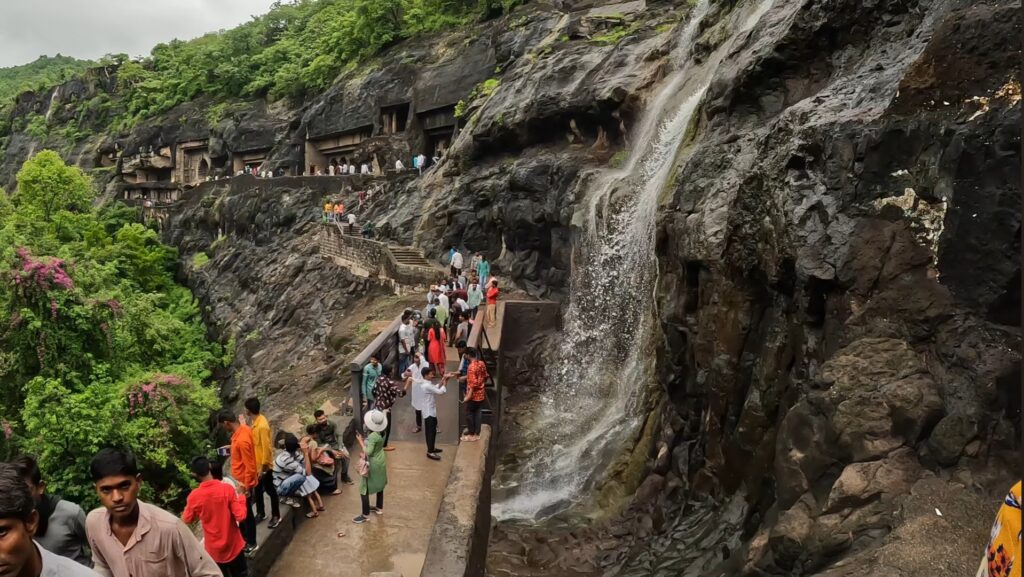
1. Ajanta Caves:
The Ajanta Caves are known for their beautiful frescoes and sculptures. The elaborate paintings, which are among the best specimens of ancient Indian art, show several Jataka tales, or stories, about the Buddha’s previous lives. These myths are more than just visual depictions; they contain profound spiritual and moral truths. Caves 1 and 2 are particularly well-known for their detailed paintings, which have stood the passage of time. The Buddha statues’ tranquil looks, as well as the exquisite carvings on the pillars and ceilings, capture the pinnacle of old artistry.
The caves are divided into two main categories: chaityas (prayer halls) and viharas (monasteries). The chaityas, such as Cave 9 and Cave 10, are characterised by their vaulted ceilings and stupa-centric layouts, providing spaces for collective worship and meditation. The viharas, on the other hand, served as residential quarters for monks, featuring central halls surrounded by smaller cells, exemplified by Cave 1 and Cave 2.
2. Ellora Caves:
Ellora is celebrated for the grand Kailasa temple (Cave 16), a colossal monolithic structure dedicated to Lord Shiva. This architectural feat was carved out of a single rock, descending from the top down, a method known as “vertical excavation.” The Kailasa temple is larger than the Parthenon in Athens and is adorned with intricate carvings and sculptures depicting scenes from Hindu mythology.
The Hindu caves are adorned with intricate carvings of deities, mythological scenes, and elaborate facades. Cave 21, known as the Rameshwar cave, features exquisite carvings of the river goddesses Ganga and Yamuna. The Buddhist caves include impressive viharas and chaityas, with Cave 12, known as the Teen Tal, being a three-story monastery with a stunning central hall. The Jain caves, although fewer in number, are noted for their detailed and precise carvings, with Cave 32, also known as the Indra Sabha, showcasing elaborate sculptures and a grand hall dedicated to the Tirthankaras.
Cultural Significance
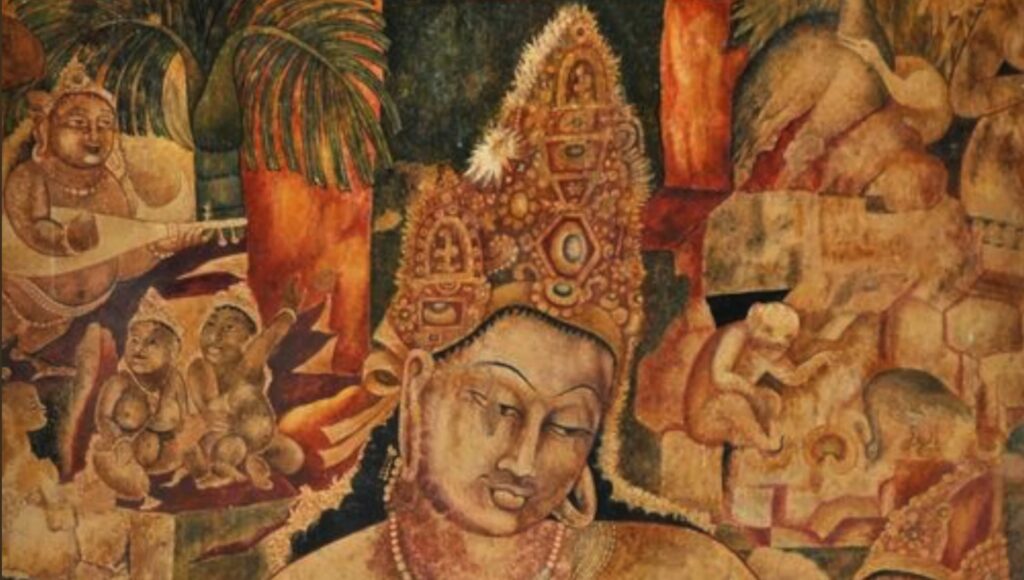
The Ajanta and Ellora Caves are not just architectural wonders; they are also significant cultural and religious sites. The Ajanta Caves played a crucial role in the spread of Buddhism in India and beyond. The vivid paintings and sculptures served as educational tools for the teachings of the Buddha, illustrating his life and previous incarnations in a manner accessible to both monks and laypeople.
Ellora, with its multi-religious caves, stands as a symbol of India’s historical religious tolerance. The co-existence of Buddhist, Hindu, and Jain caves in one complex reflects the harmonious blending of different faiths and cultures during ancient times. This site exemplifies how these diverse religious communities coexisted and thrived, contributing to the rich tapestry of India’s cultural heritage.
Read More : Top 10 Best Adventure Places in India
Visiting the Caves

A visit to the Ajanta and Ellora Caves is a journey through time. Located near the city of Aurangabad, these caves are easily accessible by road, rail, and air. The best time to visit is during the cooler months from November to March, when the weather is pleasant for exploration.
Ajanta Caves
Visitors should begin their journey at the Ajanta Visitor Center, where a scale model of the site and an informative museum provide context for the visit. From the center, a short shuttle ride takes you to the cave entrance. It is advisable to start early in the day to avoid crowds and fully appreciate the serene atmosphere.
Each cave has its own unique charm and significance. Allocate sufficient time to explore them thoroughly, particularly Caves 1, 2, 16, and 17, which are renowned for their well-preserved frescoes and intricate sculptures. The stunning mural paintings in Cave 1 depict various Jataka tales, while Cave 2 offers a glimpse into the daily life and activities of the Buddhist monks.
Ellora Caves
Ellora’s sheer size and diversity require careful planning. The Kailasa temple (Cave 16) is the highlight and should be the starting point of any visit. This awe-inspiring structure, with its elaborate carvings and monumental scale, deserves a thorough exploration.
Other notable caves include Cave 10, known as the Vishvakarma cave, a Buddhist chaitya hall with a striking stupa, and Cave 21, the Rameshwar cave, with its exquisite sculptures of river goddesses. The Jain caves, particularly Cave 32, offer a peaceful and serene environment, with intricate carvings and beautiful sculptures of Tirthankaras.
The Kailasa Temple Ellora

The Kailasa Temple, located in the Ellora Caves in Maharashtra, India, is a remarkable example of ancient rock-cut architecture and one of the largest monolithic structures in the world. Carved entirely out of a single rock, this magnificent temple was built during the 8th century under the reign of the Rashtrakuta king Krishna I. Dedicated to Lord Shiva, the temple is designed to resemble Mount Kailash, the sacred abode of Shiva in Hindu mythology. What makes the Kailasa Temple extraordinary is not only its scale but also the intricacy of its carvings, which include detailed depictions of Hindu deities, mythological scenes, and various animals. The entire temple complex, which includes elaborate pillars, halls, and a towering central shrine, was meticulously carved from top to bottom, making it a marvel of ancient engineering and artistry.
Tips for Visitors

- Take Your Time: Each cave has its unique charm, so allocate sufficient time to explore them thoroughly.
- Hire a Guide: To fully appreciate the historical and cultural significance, consider hiring a knowledgeable guide. Their insights can provide a deeper understanding of the artistic details and historical context.
- Wear Comfortable Shoes: Be prepared for a fair amount of walking and climbing. The terrain can be uneven, and comfortable footwear is essential.
- Photography: While photography is allowed, respect the sanctity of the sites and avoid flash photography in areas with delicate frescoes. Capturing the beauty of these ancient artworks requires a gentle approach to preserve their integrity.
- Stay Hydrated: The climate can be warm, especially during the day. Carry water and stay hydrated as you explore the extensive complexes.
How to reach Ajanta and Ellora Caves

Here’s how you can reach them from major cities:
From Mumbai
- By Air: The nearest airport is Aurangabad Airport, which is around 99 kilometres from Ajanta Caves and 30 kilometres from Ellora Cave. You can fly direct from Mumbai to Aurangabad.
- By Train: Trains like the Devagiri Express and Tapovan Express connect Mumbai to Aurangabad.
- By Road: Ajanta and Ellora are about 400 km from Mumbai. You can drive or take a bus to Aurangabad and then hire a taxi to the caves.
From Delhi
- By Air: Direct flights are available from Delhi to Aurangabad.
- By Train: You can take a train to Aurangabad, though it’s a long journey, taking about 24 hours.
- By Road: Driving from Delhi is not practical due to the distance (about 1,200 km).
From Pune
- By Air: There are flights from Pune to Aurangabad, but they may not be as frequent as from Mumbai.
- By Train: The Pune-Aurangabad train route is served by several trains, like the Pune-Nanded Express.
- By Road: The distance from Pune to Aurangabad is around 236 km. Driving or taking a bus is convenient.
From Bengaluru
- By Air: Direct flights to Aurangabad are available from Bengaluru.
- By Train: Trains from Bengaluru to Aurangabad take about 24 hours, with some trains like the Karnataka Express providing connectivity.
- By Road: The distance is approximately 950 km, making it a long road journey.
Local Travel from Aurangabad to Ajanta and Ellora:
- By Taxi: Taxis are easily available for hire in Aurangabad. They can take you to both Ajanta and Ellora Caves.
- By Bus: Maharashtra State Road Transport Corporation (MSRTC) buses operate regular services to the caves from Aurangabad.
Accommodation Near Ajanta and Ellora Caves
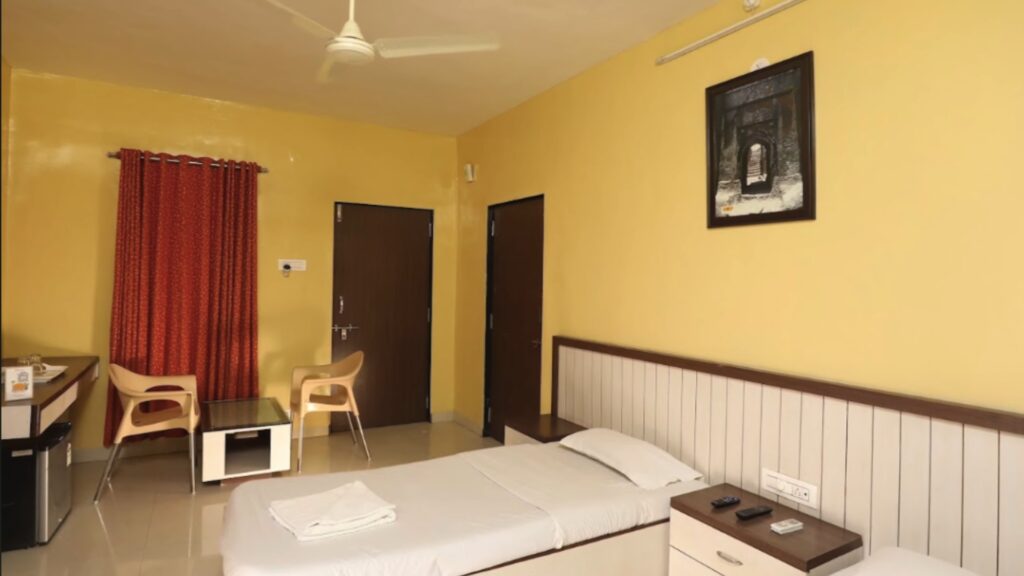
While there are no accommodations directly within the Ajanta and Ellora Caves complexes, several options nearby make visiting these historical sites convenient. For Ajanta Caves, nearby towns like Fardapur and Jalgaon offer places to stay. The MTDC Ajanta T Point, just 4 km from the caves, provides basic accommodations, while Hotel Kailas in Fardapur, around 10 km away, offers more comfortable amenities. Jalgaon, 60 km from Ajanta, has additional budget-friendly options like Hotel Royal Palace and Hotel Plaza.
Near Ellora Caves, Hotel Kailas is a popular choice, located just 1 km from the cave entrance, offering easy access to the site. The MTDC Holiday Resort also provides a peaceful stay nearby. For more variety, Aurangabad, 30 km from Ellora, offers a range of accommodations, from budget hotels to luxurious options like The Taj Residency Aurangabad and WelcomHotel Rama International. Staying in Aurangabad also makes it easy to visit both Ajanta and Ellora Caves.
Best Time To Visit and Timing

The ideal time to visit the Ajanta and Ellora Caves is from October to March. During these months, the weather is cooler and more comfortable for exploring the caves, which involve significant walking and climbing. Temperatures typically range between 15°C and 25°C, providing pleasant conditions for sightseeing.
The monsoon season, from july to September, offers lush landscapes, waterfalls, and scenic beauty due to the rains, though it can be humid and occasionally rainy. Summer, from April to June, is generally very hot, with temperatures often exceeding 40°C, which can make outdoor activities uncomfortable.
Timing of Ajanta and Ellora Caves
Ajanta Caves:
Open: 9:30 AM to 5:30 PM
Closed on: Monday
Recommended Visit Duration: 3-4 hours
Ellora Caves:
Open: 9:30 AM to 5:30 PM
Closed On: Tuesday
Recommended Visit Duration: 4-5 hours
For a more enjoyable experience, plan your visit early in the day to avoid crowds and ensure ample time to explore the detailed artwork and carvings in both cave complexes.
Read More : Bir Billing Adventure: Conquer Thrills Amongst the Peaks
Conclusion
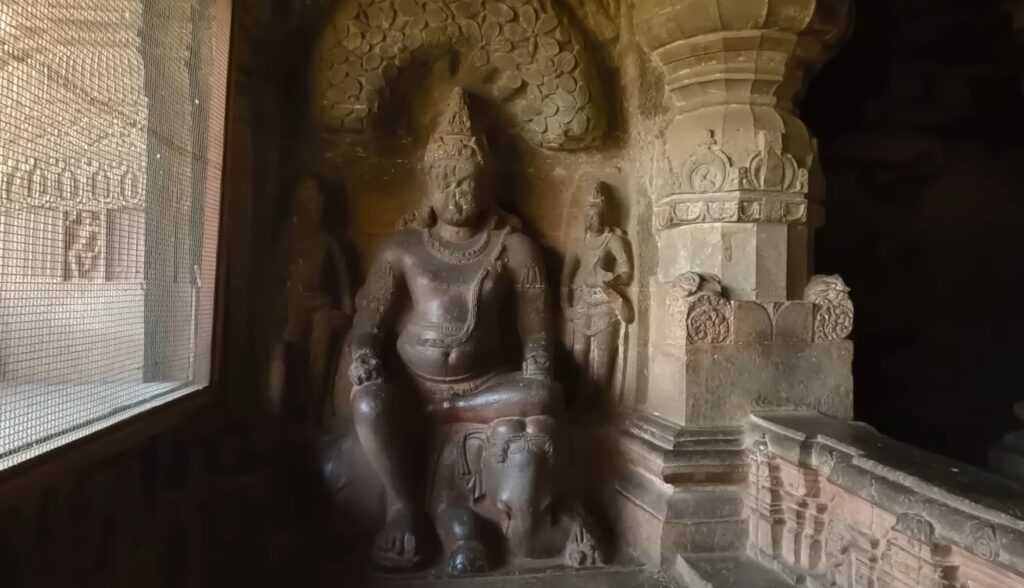
The Ajanta and Ellora Caves are more than just tourist attractions; they are windows into India’s rich and diverse past. These ancient rock-cut caves continue to captivate and inspire visitors with their artistic grandeur and historical depth. Whether you are a history enthusiast, an art lover, or a curious traveler, the Ajanta and Ellora Caves promise an unforgettable experience that transcends time.
As you walk through these ancient corridors, you are not just witnessing the remnants of a bygone era but are also partaking in a legacy that has shaped the cultural and spiritual heritage of India. The Ajanta and Ellora Caves are timeless wonders, offering a profound connection to the artistic and religious endeavours of ancient India.


